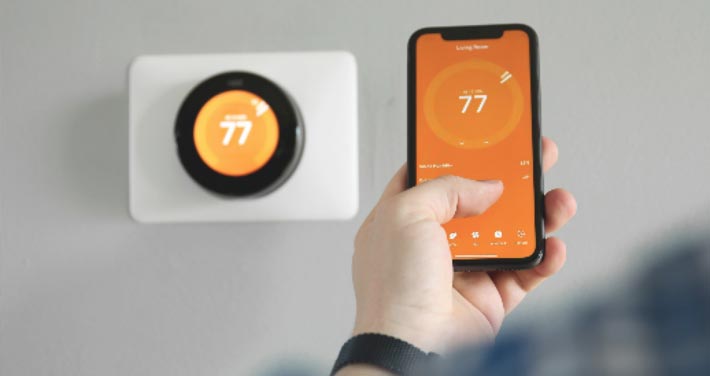One of the many considerations before switching to an electric vehicle (EV) is how you’ll refuel, and there’s a lot to unpack. For starters, your driving habits, or how many miles you typically travel per day, will influence where and how frequently you need to charge.
The range of your chosen vehicle, or the expected driving distance before requiring a recharge, will also factor into how frequently you need to refuel. Over half of the all-electric vehicles currently on the market can cover a distance of over 250 miles on a single charge. Keep in mind that weather conditions (extreme heat or cold), terrain, local vs. highway driving, and how much you use the heat or AC all impact the actual range of your EV.
With these things in mind, you can develop a plan for how you will refuel your EV, whether at home, at work, or on the go.
Home Charging
It may surprise you to learn that approximately 80% of EV charging takes place at home because it’s convenient to do so overnight when the car is parked. There are a couple of options for at-home charging.
Level 1
Level 1 charging delivers approximately 5 miles of range per hour of charge via a standard three-prong outlet and the charging cord that comes with most EVs. This equates to about 40 to 50 miles of range for an overnight charge (8 to 10 hours), and is a great option if you’re a low-mileage driver. Best of all, no special equipment or installation is needed.
Level 2
If you cover more than 40 to 50 miles per day, installing a level 2 charger may be a better option. These chargers deliver approximately 25 miles of range per hour of charge, which equates to about 200 to 250 miles of range for an overnight charge (8 to 10 hours). Because level 2 chargers require a 240-volt outlet, you will likely need to enlist the services of a professional electrician to perform the installation, and some other electrical work (such as a panel upgrade) may be required to prepare your home. Massachusetts electric customers may be eligible for a rebate on this electrical work with Unitil's Ready2Charge program.
It’s also important to note that actual charging times vary based on the size of the vehicle’s battery and the charging rate it is capable of accepting, as well as the capability of the charger that you’re using.
Another consideration for home charging is whether you rent or own. If a renter, your options for installing a level 2 charger are likely to be limited. Fortunately, level 2 chargers are becoming more commonly available in multi-unit buildings. If one isn’t available, ask your landlord or homeowners' association about plans to install level 2 chargers at your residence.
Learn more about electric vehicle charging options and the process to notify Unitil when you’re installing an EV charger.
Charging at Work
Workplace charging is also quite popular for those who commute to a physical location because it’s another convenient opportunity to charge the car when it’s parked.
Workplace charging comes in a variety of forms, and some companies even provide it for free as an extension of their employee benefits program.
The challenge with workplace charging is balancing supply with demand – if there are too few chargers, you may be vying for a spot. Luckily there are some solutions to combat this. Many workplaces build pricing structures that encourage the owner to move their car once charging is complete. Some charging networks even allow owners to get in line for a charger, and the charging network’s app then notifies the owner when a plug is available.
More than half of the all-electric vehicles currently on the market have a range of 250+ miles on a single charge.
Public Charging
Public charging is typically available as either level 2 or DC Fast Charge. Where a level 2 charger delivers approximately 25 miles per hour of charge, a DC Fast Charger can recharge a battery to 80% in as little as 20 minutes. Public level 2 chargers are more likely to be found at destinations such as shopping plazas, whereas DC Fast chargers are more likely to be found near interstate highways or at rest stops.
One important consideration when looking for a public charger is plug compatibility, as different vehicles have different charging ports. The most common are the Tesla, J1772, and CHAdeMO connectors.
Other considerations include the type of charger (level 2 or DC Fast Charge), the location of the charger, its condition (whether it is in working order), and its availability (is it currently in use or is it free). Fortunately, there are several maps that help locate charging stations and provide all of the necessary information including Plugshare, the Alternative Fuels Data Center, and many more.
It’s important to note that while the nation’s EV charging infrastructure is growing at a rapid pace, public chargers are still few and far between in some parts of the country. If you’re thinking about embarking on a road trip, researching what’s available along your route beforehand will help ensure you have the charge you need to make it to your final destination.
The way EVs are refueled is indeed fundamentally different than their gas-powered counterparts – but some advanced research and planning can eliminate much of the guesswork.
Telematics and mobile apps
EV manufacturers have advanced telematics embedded in vehicles, enabling owners to learn about how their vehicle uses energy through a mobile app. Driving analysis, vehicle navigation and charging data are collected to provide drivers with information to help optimize the safety, efficiency and quality of their travel.
Key Takeaways
- EVs typically cost more than their gas-powered counterparts at the time of purchase, but they’re less expensive to operate and require less maintenance in the long run.
- There’s definitely a learning curve with refueling EVs, but tools like public charging maps make it easy to have information at your fingertips.




